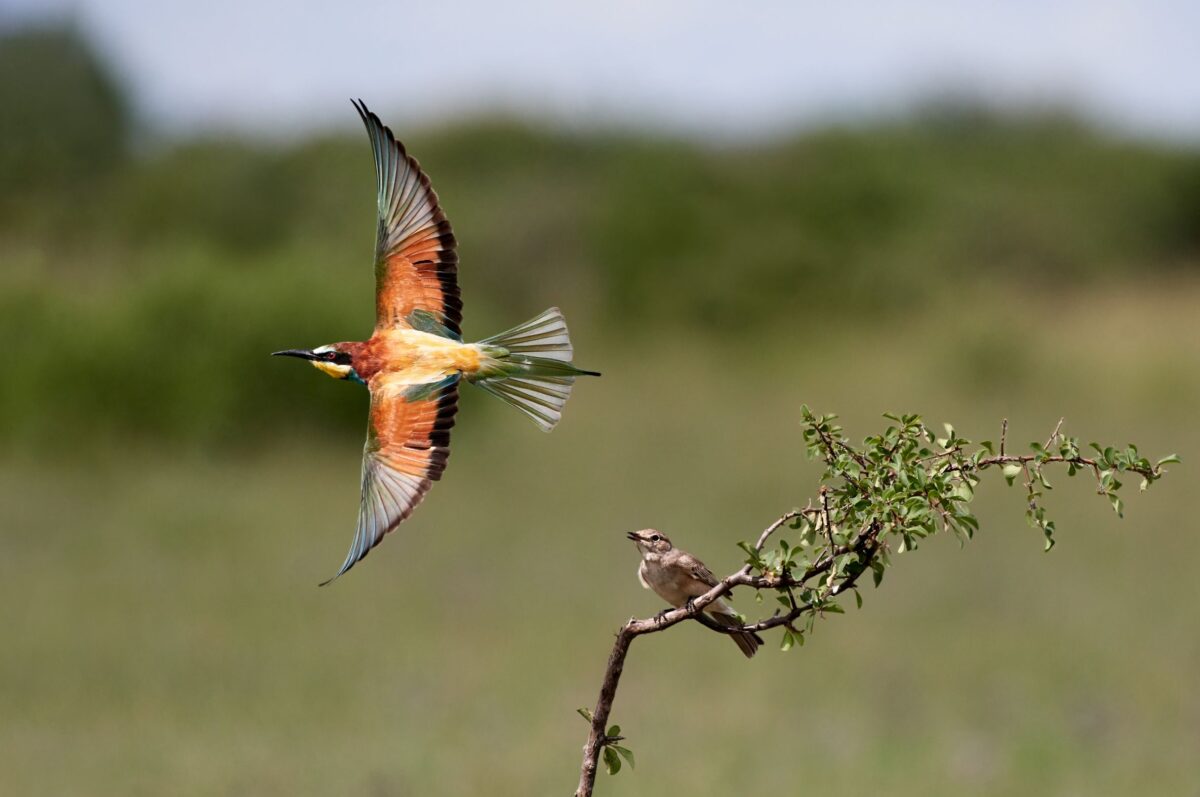Rare European bee-eaters are nesting directly in the large ungulate reserve for the first time this year

Brightly coloured European bee-eaters nested in the territory of the large ungulate reserve in the former military training area of Milovice near Prague for the first time this year. Scientists discovered their typical burrow-like nests at two locations in the pasture reserve.
“Three years ago ornithologists registered that a few pairs of European bee-eaters were flying into the large ungulate reserve. However, they were nesting outside the pastures of large herbivores at that time. This year is the first time that European bee-eaters have created their nesting holes in the area of the pasture reserve,” said Dalibor Dostal, Director of the conservation organisation European Wildlife, which founded the large ungulate reserve in cooperation with scientists in 2015. European bee-eaters rank among severely endangered bird species in central Europe, and they are included on the Red List in a number of countries.
It is large ungulates in particular that help the rare European bee-eaters secure their food as well as create biotopes suitable for nesting. “The grazing of large ungulates has increased the abundance of flowering plants in the entire area and thus also the numbers of insects on which European bee-eaters feed. At the same time, large ungulates tear off turf using their hooves and horns at several sloping places in the reserve. This action creates exposed and almost vertical walls which then represent an ideal place for the nesting of the European bee-eater. We hoped that over time European bee-eaters would take advantage of this new nesting opportunity,” added Miloslav Jirku from the Biology Centre of the Czech Academy of Sciences.
European bee-eaters are one of the most attractive bird species that inhabit the large ungulate reserve. “Thanks to their colours, European bee-eaters are a favourite target of wildlife photographers, who come to the former military training area to take photographs not only of bison, wild horses and bred-back aurochs but also of the many species who benefit from the return of the large ungulates,” added Dalibor Dostal. For example, the hoopoe is found in the area of the reserve, and ornithologists also observe both red and black kites, and Montagu’s harriers there. The Eurasian wryneck, partridges, quails, the barred warbler, European stonechat, whinchat and other bird species are found in the reserve as well. The white-tailed eagle began to fly over the reserve for the first time last winter.
European bee-eaters, also nicknamed as the flying jewels of European landscape, had long inhabited mainly warmer regions of Europe. In recent years, though, they have been spreading to other regions towards the north, which is due to various reasons, including climate change.
Photo: Tomas Grim
 Photo: Dalibor Dostal
Photo: Dalibor Dostal





